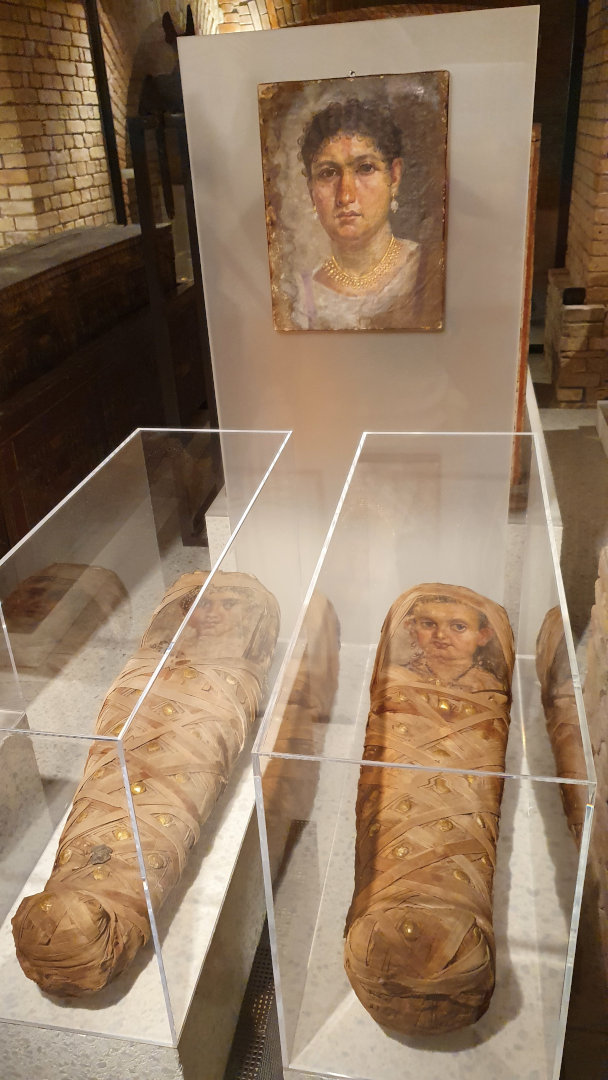Mummy time! Did you know...
I made a new video all about mummies! Mummies are displayed in many museums around the world, but are not often well explained. In my video you can find out 5 things about mummies that you may not have known:
- “Mummy” can mean different things. We use the same word to talk about bodies that have been naturally dried out and bodies that have been elaborately prepared to resist decay. The latter, as practiced in Egypt, is the focus of my video!
- Mummies were made of a lot more than just a corpse and the wrappings. To keep the body from decaying, not just cloth but also antimicrobial resins (tree sap or tar) were painted onto the body and wrappings. Precious stones could be wrapped up in there too as a magical defence again evil.
- Mummies were fashion victims. Over the thousands of years of mummification in Egypt, there are observable trends in mummy appearance. Earlier mummies tend to be put in cases with gold faces and idealized features, whereas later mummies (once the Romans take over Egypt) carry on the Roman tradition of portraiture by having naturalistic painted portraits placed over the mummy’s face.
- Not only pharaohs were made into mummies. Other people were too, as well as all kinds of animals. And food too! All of these things were mummified in order to be preserved in the afterlife as long as possible – ideally for eternity.
- High-tech research is telling us more than ever about mummies. X-rays, CAT scans, and other scanning technology is revealing details about mummies that were never known before. One mummy – Heraklides, in the Getty Museum (link) – was revealed to have a mummy of an ibis inside his own mummy wrappings! Another research project (link) showed that mummification was being practiced in Egypt 1000 years earlier than previously believed: starting around 3600 BC, not 2600 BC. That’s huge, not just because it’s 1000 years but because 3600 BC is nearly the earliest period of Egyptian civilization.
Two very striking mummy groups
These are two of the most affecting groups of mummies I know. Each one tugs at the heartstrings: Poor kitty! Poor family!
Research and museums can open up this intimate and even emotional connection to past civilizations.
Mummy Resources
Supplementing the video, I’ve assembled some great resources for a deeper dive into mummies (ew):
- The Smithsonian Museums offer a good short (& reliable!) overview of mummification.
- Find out more about cat mummies in this article by the McClung Museum of Natural History and Culture.
- These books about animal mummies are riveting:
- The Brooklyn Museum made a short video showing examples of animal mummies from their 2017-18 exhibition.
- The APPEAR Project at the Getty uses scanning techniques on mummies, especially on the painted mummy portraits.
- Here is a very good and reliable overview of mummification from the Spurlock Museum of World Cultures.
- Here’s a research paper about the natural preservatives used in mummification. There’s a great quick-reference table listing the antimicrobial ingredients in pine, cedar, cinnamon, lichen, and more.
Enjoy learning more about this incredible funerary tradition!


